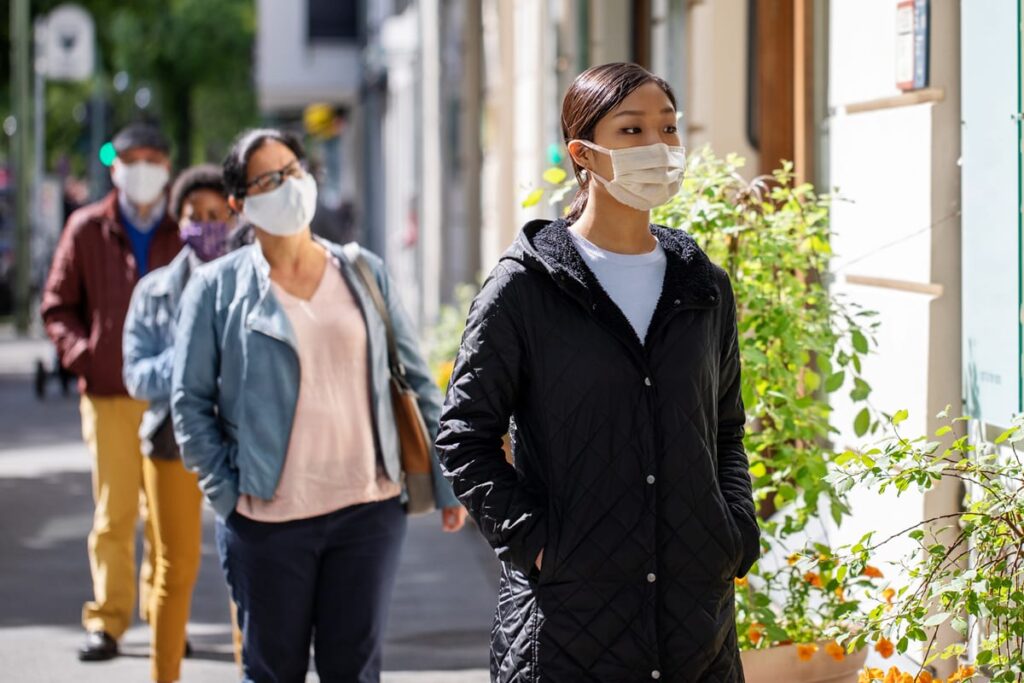
How can the healthcare industry acknowledge racial disparities and strategically work to reduce them?
While no one is immune from the coronavirus, certain groups have proved to be more at risk than others—and we’re not talking just about older individuals or the immunocompromised. Racial and ethnic minority groups are consistently suffering more severe outcomes, including death, from COVID-19 than are white people – and have been since the early days of the pandemic.
The disproportionate impact on Black and Latino people is widespread, as evidenced by data from hundreds of urban, suburban and rural areas spanning all age groups, as The New York Times reported in July. At that time, Blacks and Latinos in the United States were three times as likely as their white neighbors to become infected, and nearly twice as likely to die.
According to the Brookings Institution, Black people in every age category are dying from COVID-19 at roughly the same rate as white people more than a decade older, while age-specific death rates for Hispanic/Latino people fall in between. Milwaukee County, Wisconsin; Chicago; Kent County, Michigan; New York City; Louisiana—these are just a few of the cities, counties and states nationwide experiencing huge racial disparities in infection and death. And, as the Kaiser Family Foundation points out, those who identify as American Indian or Alaska Native also face disproportionate risks from COVID-19. The disparities extend into related pandemic effects such as recent unemployment, hunger and evictions, The Washington Post cautions.
While these numbers are incomplete and constantly changing, one fact remains: This disturbing pattern must be addressed.
Why Is This Happening?
Racial inequities and injustice are an unavoidable and critically important hot-button topic these days in the United States. While it is irresponsible (and inhumane) to ignore such issues, it can be just as irresponsible to jump to conclusions. That said, according to a February 2020 health policy brief in Health Affairs journal, “Discrimination due to race, gender, gender identity, and sexual orientation determine(s) access to health care and the social determinants of health.” And the Centers for Disease Control and Prevention (CDC) makes it clear that inequities in social determinants of health are a significant factor in the disparities surrounding COVID-19. These determinants include:
- Discrimination in systems such as healthcare, housing, education, criminal justice and finance
- Healthcare access and utilization obstacles such as inadequate or nonexistent insurance; lack of transportation, childcare or ability to take time off work; communication and language barriers; and cultural differences
- Occupation factors such as which jobs are considered “essential,” work settings that carry increased chances of exposure to the coronavirus, the need to commute by public transportation, and lack of paid sick leave
- Educational, income and wealth gaps, which limit job options
- Housing factors such as crowded conditions that prevent social distancing
These social determinants, the CDC says, also “have contributed to higher rates of some medical conditions that increase one’s risk of severe illness from COVID-19.” Cancer, chronic kidney disease, chronic obstructive pulmonary disease (COPD), a compromised immune system, obesity, heart conditions, sickle cell disease and type 2 diabetes mellitus all can increase the risk. At least a dozen additional conditions might do so. A higher prevalence of comorbidities that increase the coronavirus risk—such as hypertension, diabetes, obesity and cardiovascular disease—might also be at least partly attributable to various social determinants of health, as suggested by Dr. Clyde W. Yancey in an opinion piece for JAMA Network.
What the Healthcare Industry (and Others) Can Do
What these groups need, the CDC advises, is:
- Social support (faith, family, cultural bonds)
- Empowerment and encouragement for individuals and communities to protect themselves, care for those who are sick, keep children healthy, better cope with stress
- Easy access to information, affordable testing, and medical and mental health care
- Programs and practices “that fit the communities where racial and minority groups live, learn, work, play and worship”
That means finding ways to maintain support and connection (even for those who are physically separated); enlisting the cooperation of various groups with a role in helping promote fair access: community- and faith-based organizations, employers, healthcare systems and providers, public health agencies, policymakers and others.
In addition, as urged in a July blog in Health Affairs journal, we must compile and release hard data on COVID-19 cases broken down by race and ethnicity—and seek and provide context for these numbers. That means focusing on the “why” and the “what can be done,” without jumping to conclusions. And it calls for consistency and transparency in how we collect, analyze and disseminate data. We also must acknowledge the disparities and work to reduce them by improving access, building partnerships and striving to foster trust among those who are understandably distrustful of various systems. More access and a deeper level of understanding of behaviors by populations, groups and individuals should be buoyed by widespread virtual health adoption and its promise of lower-cost, higher-efficacy care.
Rarely these days do events happen in a vacuum. We owe it to ourselves and one another to search for answers—and to, as the aforementioned Health Affairs blog put it, “move beyond superficial explanations of health inequities” and find the root causes.
Explore more about disparities in healthcare in this blog post on the importance of figuring out how to address health inequities.


About The Author: Medecision
Medecision is a leader in cloud-based, data-powered healthcare solutions, enabling risk-bearing entities to achieve improved health outcomes, optimized medical costs, reduced administrative costs, and personalized engagement. Our Aerial platform supports over 10% of the U.S. population, marking a significant milestone in advancing healthcare efficiency and effectiveness.
More posts by Medecision